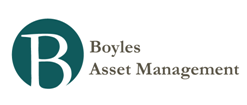Hussman Weekly Market Comment: Inflation Myth and Reality
As for the stock market, it is desirable to believe that stocks will prove to be a good hedge against inflation, since they are after all a claim on nominal cash flows which grow over time as prices increase. This was certainly the expectation in the early 1970's, when inflation risks were dismissed by investors in the belief that earnings would keep up with general prices.
Unfortunately, the view that inflation pressures are benign runs opposite to historical evidence. Specifically, there is a relatively high correlation between inflation rates and earnings yields. Investors tend to systematically elevate P/E ratios when inflation rates are low and depress P/E ratios when inflation rates are high. Which is not at all to say that this behavior is rational. To the contrary, the high P/E multiples that coincide with low inflation are also associated with unusually poor subsequent nominal and real returns. Conversely, the low multiples that coincide with high inflation tend to be associated with unusually high subsequent nominal and real returns.
The implication is that (barring actual deflation) investors view low inflation as a "feel-good" indicator and drive stock valuations excessively high in response. Conversely, they tend to punish stock valuations so much when inflation is high and variable that stocks actually tend to deliver very good subsequent returns. Transitions between low inflation to high inflation, then, tend to be quite painful for equity investors, while transitions from high inflation to low inflation tend to be unusually pleasant.
Fortunately, we have enough data both domestically and internationally to analyze inflation-prone environments with the expectation of dealing with them effectively from an investment standpoint. To understand the investment environment is to know how to respond. Presently, the greatest uncertainty for us continues to be the dichotomy between typical post-recession market dynamics and the much more difficult environment that we may very well actually be in, if previous credit crises in history are any guide. We share none of Wall Street's confidence that the more difficult possibility should be dismissed, and suspect that it is premature to declare the credit crisis over.
- Nightmare On Wall Street: This Secular Bear Has Only Just Begun - By Ed Easterling
Secular bull markets are great parties. Investors arrive from secular bears really wanting to take the edge off. As the bull proceeds, above-average returns become intoxicating. By the time it is over, the past decade or two has delivered bountiful returns. ...
- Leucadia National Annual Meeting Notes 2012
From The Brooklyn Investor blog (found via the Corner of Berkshire & Fairfax). LUK is an Inflation Play In answering the above question about the future of LUK, Steinberg said that they started first and foremost as opportunists. He...
- Hussman Weekly Market Comment: Anatomy Of A Bubble
Presently, the Shiller P/E stands at 24. Be careful how you interpret the data in the table for Shiller P/E's above 24, since these levels were almost never observed in data prior to the late-1990's market bubble. You can see the odd effect of...
- Inflation May Be Coming. Time To Look For A Hedge. - By Whitney Tilson And John Heins
Because inflation hasn't afflicted America in some 30 years, it's worth reviewing what rising prices might mean for stock investors. In a 1977 article on the subject in Fortune, Warren Buffett went to great lengths to disabuse shareholders of...
- Nominal Vs Real Return
Nominal returns are the total annual return that you received on the investment. Real return accounts for the effects of inflation. Real Return = Nominal Return - Inflation Rate For the purposes of this example I've assumed that $1 is invested at...

